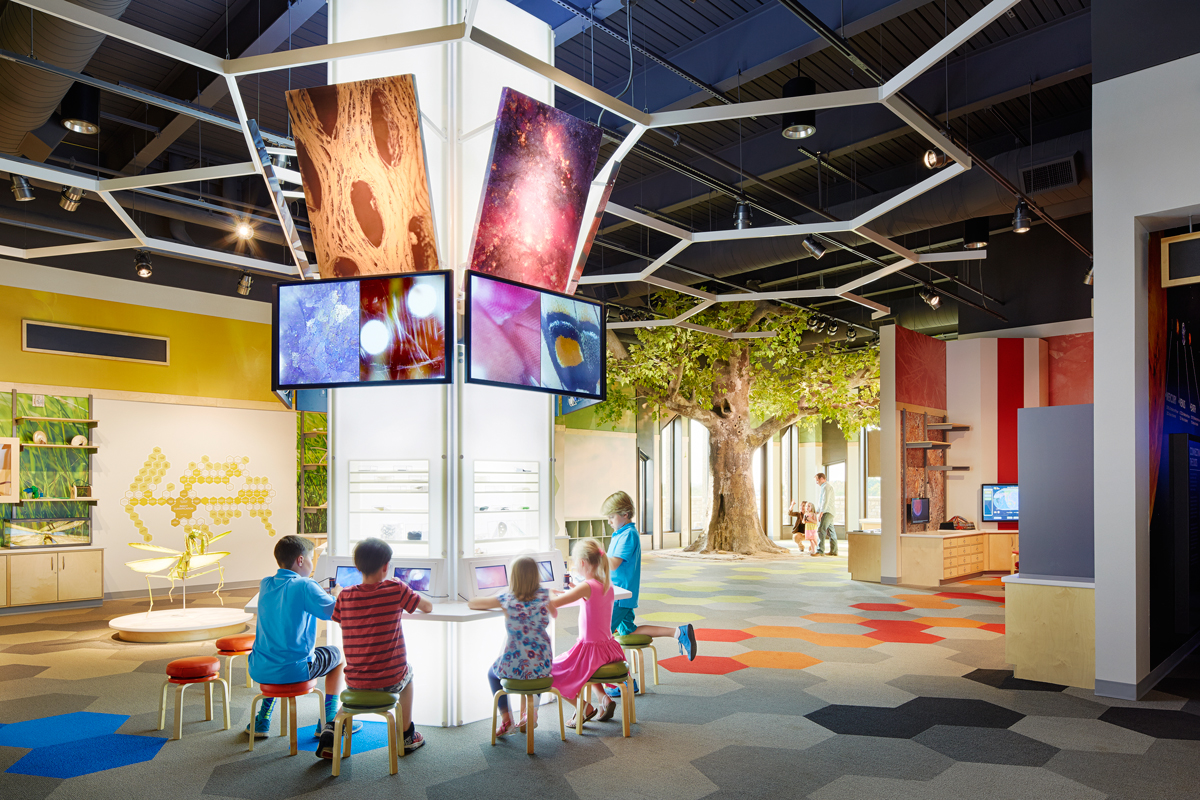What is solid surface and why do you need it?
[vc_row row_type=”row” text_align=”left” css_animation=””][vc_column][vc_column_text]
You’ve probably heard of an increasingly popular material called solid surface, which is becoming a design standard among designers and architects for intensive use and hygienic environments beyond just countertops. But what is solid surface, really?
The composition and performance qualities of solid surface can provide significant short- and long-term benefits when compared to wood, plastic laminate, metal or stainless steel building materials. We’ve outlined the basics of solid surface below as an introduction to why Shield builds our products with this remarkably versatile material.
[/vc_column_text][vc_empty_space height=”15px”][vc_column_text]
What is solid surface?
In 1963, solid surface was merely an idea. Don Slocum, a researcher at DuPont™ Chemical Company, aspired to create a durable, sanitary and aesthetically pleasing product that was homogenous in material and color. While more popular materials such as granite, marble and laminate were widely used as building materials, they’re also naturally porous or used porous substrates, and thus more likely to deteriorate with use and harbor harmful bacteria.
Slocum collaborated with researchers and engineers at DuPont to create the first sheets of solid surface in 1964, which they called Corian®. Many companies have since created their own brands of solid surface, including LG HI-MACS®, DuPont™ Corian®, Aristech Avonite Surfaces®, and Lotte Staron® to name a few.
[/vc_column_text][vc_empty_space height=”15px”][vc_single_image image=”12876″ img_size=”full”][vc_empty_space height=”15px”][vc_column_text]
How is solid surface made?
Making solid surface is like baking a cake. Cakes include dry ingredients, liquids, food dyes and decorations. Likewise, to create solid surface, you need a combination of filler, a binder, pigments and particulates. Here’s a closer look at each of these “ingredients”:
Filler
The filler is the dry ingredient in the baked good—the flour, the sugar, the baking soda. In solid surface, the filler is typically Aluminum Trihydrate (ATH). What exactly is ATH? A natural mineral likened to stone dust that takes the form of white powder and adds tensile strength to the final product. This tensile strength is what allows solid surface products to carry loads without faltering.
Some of the properties that make it optimal for solid surface include its low oil absorption, water resistance, heat resistance, durability and malleability. Put all together, it creates an incredibly strong building material.
Binder
The binder is a syrupy liquid that holds all of the ingredients together, like the eggs in cookies. Found naturally in plants, resin is the most common binder used in solid surface. Recipes commonly call for acrylic resin, which creates a stronger thermo moldable solid surface sheet. Polyester resin can also be used, which creates a slightly more brittle solid surface sheet with a glass-like finish.
Every time you touch your phone screen or drive your tires across the road, you’re interacting with resin. Ever been to an aquarium? The glass that keeps you and the fish seperate… that’s resin.
[/vc_column_text][vc_empty_space height=”15px”][vc_single_image image=”12877″ img_size=”full”][vc_empty_space height=”15px”][vc_column_text]
Pigment
Pigments are added to the mix to generate color. They’re cocoa powder in a chocolate cake, the food coloring in the icing. Because of the vast number of pigments and the thousands of color combinations, there are nearly limitless color options for solid surface. To help control cost and production, each manufacturer offers a set of standard color options. Some colors can be closely matched between different solid surface manufacturers.
Particulates
Particulates are various-sized chips of solid surface that are added back into the mix to make patterns or designs in the final product. These are the vanilla swirls in the chocolate brownies, the chocolate chips in the cookie. Particulates allow for a nearly limitless number of designs and textures, including mimicking natural stone finishes.
ATH and resin combine to create solid surface, and pigments and particulates are added during the casting process to give the solid surface it’s prescribed color and design.
[/vc_column_text][vc_empty_space height=”15px”][vc_single_image image=”12878″ img_size=”full”][vc_empty_space height=”15px”][vc_column_text]
What makes it different?
There are three main characteristics of solid surface that make it a better option than other materials, saving you money in the long run: It’s durable, it’s hygienic and it has almost unlimited design potential.
Durable
Solid surface is extremely durable. The product is guaranteed for up to 10 years by most manufacturers—and up to 15 years by LG-HIMACS—but it is easily repairable and can theoretically last a lifetime. Which is why we guarantee our products with Shield’s lifetime warranty.
When solid surface is manufactured, it’s “cured” so that the chemical reactions are almost fully completed. Because the chemical reactions and bonds are nearly 100 percent complete, the final product is very stable and inert, allowing it to hold significant weight and withstand intensive use.
The ATH composition in solid surface gives it a different tensile strength than many materials and improves resistance to scratching, heat, fire, water, chemicals and stains. In fact, per ASTM E84 flammability testing results, manufacturers such as LG and DuPont have achieved the highest “Interior Finishes” rating, Class A, with their solid surface material. Moreover, accidental damage inflicted on your solid surface can usually be repaired.
We stuck one of our cabinets in the woods for 10 months to show just how durable solid surface is.
[/vc_column_text][vc_empty_space height=”15px”][vc_column_text]
[/vc_column_text][vc_video link=”https://www.youtube.com/watch?v=eTrMEbjNjFw”][vc_empty_space height=”15px”][vc_column_text]
Hygienic
Solid surface is easy to clean, and its lack of seams and cracks makes germs and bacteria growth less prominent, all of which make solid surface even more durable.
- It can be constructed into a continuous, seamless product, removing grout seams and edges. Dirt tends to build up in cracks and corners, so solid surfaces retain less dirt and bacteria.
- It’s nonporous, which means you don’t have to continually re-apply protective finishes to keep microscopic holes sealed.
- It’s solid, all the way through to the core, which makes it tamper-resistant and extremely durable around edges, a common failure point for plastic laminates.
- It’s even been approved by the National Sanitation Foundation, which means it’s really clean.
[/vc_column_text][vc_empty_space height=”15px”][vc_column_text]
Design potential
Solid surface looks nice. Consistent color and material give it a clean, elegant look. Limitless color and design options make it 100% customizable.
- It’s homogenous, so the material and color is solid throughout the entire product, giving it a clean, simple look.
- It’s thermoformable, giving it a more continuous shape that is easier for the eyes to follow.
- Since it can be formed into nearly any shape and it can take any color and pattern, you can create a product that is both sleek and memorable.
- It can be or be customized to become translucent, which when backlit allows the surface to glow or light up custom designs, patterns, company names and logos, etc.
Shield brings architects, designers and organizations across the world a lifetime-guaranteed product offering and custom solid surface manufacturing expertise to help make your design visions a reality.
[/vc_column_text][vc_empty_space height=”15px”][vc_single_image image=”12869″ img_size=”full” add_caption=”yes”][vc_empty_space height=”15px”][vc_column_text]
Where do we use it?
While solid surface was first conceived primarily as an alternative to granite, marble or laminate countertops, it’s now used to build a variety of products including furniture, tables, desks, cabinets, lockers and restrooms. Here are just a few great places to use solid surface:
Heavily trafficked areas
Because solid surface is so durable, it’s great for those locations that see hundreds of people come and go throughout the day. For example, it’s popular material for reception desks, lobby spaces, restrooms, restaurant tables, college dormitories, educational labs and retail shelving. The products not only withstand daily, intensive use, but they are also easily cleaned so as to appear brand new, even after years of use.
[/vc_column_text][vc_single_image image=”12872″ img_size=”full” add_caption=”yes”][vc_empty_space height=”15px”][vc_column_text]
Healthcare environments
Solid surface is more sanitary than traditional material. Its nonporous and seamless qualities result in less dirt and bacteria buildup, making it perfect for environments such as hospitals that require cleanliness to help prevent healthcare-associated infections (HAIs).
Additionally, because solid surface is thermomoldable, it can be shaped into a more continuous design that makes it easier for those with disabilities to use and navigate.
Hospitality and commercial buildings
For those businesses and designers looking for a more elegant, polished look, solid surface provides the perfect solution. Designers can create almost any shape with solid surface, allowing for rare but memorable designs that create a higher-end environment. The limitless options give designers and architects substantial design freedom in creating the product, allowing them to create sophisticated and elaborate solid surface products with a sleek finish.
[/vc_column_text][vc_empty_space height=”15px”][vc_single_image image=”12871″ img_size=”full” add_caption=”yes”][vc_empty_space height=”15px”][vc_column_text]
Athletic environments
Athletes can be hard on their equipment without even realizing it. Whether they’re aware that they’re damaging lockers and training room furniture or not doesn’t matter if you build smart with durable materials. Because to them, it’s just normal use. Whether it’s gallons of sweat, sopping jerseys, layers of grime, mud-laden gear, etc., solid surface is the material of choice when it comes to hygiene and longevity of your athletic investments. Learn more about Shield Lockers.
[/vc_column_text][vc_empty_space height=”15px”][vc_column_text]
Why should you use it: Takeaways
- It’s durable, so it doesn’t need to be replaced or repaired year after year, saving you money in the long run.
- It’s easy to clean, keeping your investment in like-new condition.
- It’s repairable, making scratches or gouges a simple fix.
- It’s hygienic, making it safer for everyone who comes in contact with the product.
- It’s stunning in design, attractive, and sleek
- It’s customizable, allowing us to manufacture and build exactly what you’ve envisioned.
[/vc_column_text][/vc_column][/vc_row]





Sorry, the comment form is closed at this time.